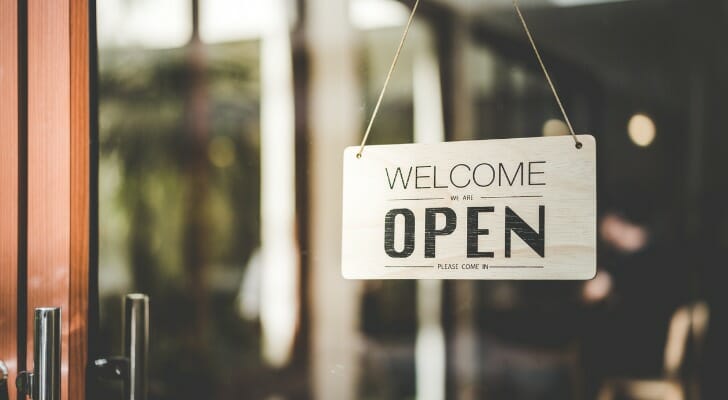 Small businesses dealing with the economic fallout of the coronavirus pandemic can qualify for several federal small business relief programs. Most of these take the form of Small Business Administration loans and grants (such as the PPP loan program, which is a loan that effectively become a grant if certain criteria are met). In addition to these programs, the SBA is offering debt relief to small businesses with an existing SBA loan. Each small business’s debt relief eligibility is based on the size of its business. This includes how many employees they have, what their annual revenue is, and other size standards the Small Business Administration (SBA) determines. Here is what you need to know about the SBA debt relief program, if you are eligible and how to apply.
Small businesses dealing with the economic fallout of the coronavirus pandemic can qualify for several federal small business relief programs. Most of these take the form of Small Business Administration loans and grants (such as the PPP loan program, which is a loan that effectively become a grant if certain criteria are met). In addition to these programs, the SBA is offering debt relief to small businesses with an existing SBA loan. Each small business’s debt relief eligibility is based on the size of its business. This includes how many employees they have, what their annual revenue is, and other size standards the Small Business Administration (SBA) determines. Here is what you need to know about the SBA debt relief program, if you are eligible and how to apply.
SBA Debt Relief Program, Explained
The SBA debt relief program, one of many federal initiatives aimed at easing coronavirus fallout for businesses, helps small businesses pay for six months of principal, interest, and any associated fees that borrowers owe for any of their current SBA 7(a), 504, or Microloans. If your loan was in regular servicing as of March 1, 2020, then the payments will be made automatically. The debt relief program does not pertain to the Paycheck Protection Program Loans.
If your small business has a 7(a), 504 or Microloan and you are currently making payments, the SBA will start making your payments at the next due date and will make six monthly payments for you. If you have deferred your loan, the SBA will start to make payments on your behalf on the next payment due date after your deferment has ended. They will continue to make these payments for six months.
Additionally, this program will cover the principal, interest, and any associated fees with any 7(a), 504, or Microloans disbursed before Sept. 27, 2020.
Who’s Eligible for SBA Debt Relief

The SBA has already notified 7(a), 504, and Microloan lenders. This means that you will not have to notify your lender, and your lender has been told to stop collecting loan payments from borrowers. If you have one of these loans and are in regular servicing, you will receive an automatic deferral of your loans.
If you do not currently have a 7(a), 504, or Microloan, you may apply for one and be eligible for SBA debt relief. You must receive your loan before Sept. 27, 2020, to qualify. In general, your business must have less than 500 employees. Private nonprofits and 501(c)(19) veterans’ organizations also qualify.
Additionally, some companies with over 500 employees may qualify, but you should check with the SBA’s size standards guidelines before applying. To check if you are eligible for an SBA 7(a), 504, or Microloan, please visit the SBA website to determine eligibility and find a qualified lender.
How to Get SBA Debt Relief
The good news is that if you already have a qualifying loan, you will automatically qualify for debt relief. Your loan will go into automatic deferral without you having to take affirmative action. If you are unsure if you qualify for SBA debt relief, it is best to check with your lender directly.
What Is ‘Automatic Deferral’?
Under the CARES Act, the SBA is required to make payments within 30 days of the date on which your first payment is due. While the SBA will cover your payments for six months, your loan will continue to accrue interest as scheduled. You can also anticipate continuing to receive your regular 1201 monthly payment notice. This notice will reflect the deferral of the loan and that no payment is due.
If you choose to continue making payments during the deferment period, you may, and the SBA will apply those payments to your balance as normal. This means that the payments will apply as if they were not in deferment. If you have questions about your loan specifically, we recommend that you contact your lender.
If you have automatic payments set up, they will stop during the automatic deferment. Therefore, speak with your lender about resuming automatic payments after the six months of debt relief aid.
The Bottom Line

SBA debt relief program is designed to help small businesses during a time of economic uncertainty. Qualifying borrowers will automatically be entitled for a deferral of their loan payments for six months. After this period, as a requirement, borrowers must continue to make their payments. Loans will continue to gain interest during this time. If you are unsure about your status as a qualifier for SBA debt relief and its implications, it is best to speak directly with your lender.
Money Management Tips for Small Business Owners
- Many financial advisors specialize in working with business owners. SmartAsset’s free tool matches you with financial advisors in your area in five minutes. If you’re ready to be matched with local advisors that will help you achieve your financial goals, get started now.
- The government’s coronavirus economic support includes paid sick leave, business interruption insurance, a tax deadline extension and many other forms of aid for individuals and businesses. Also, see our list of companies helping coronavirus-impacted people.
Photo credit: ©iStock.com/Drazen Zigic, ©iStock.com/Tonktiti, ©iStock.com/Pekic